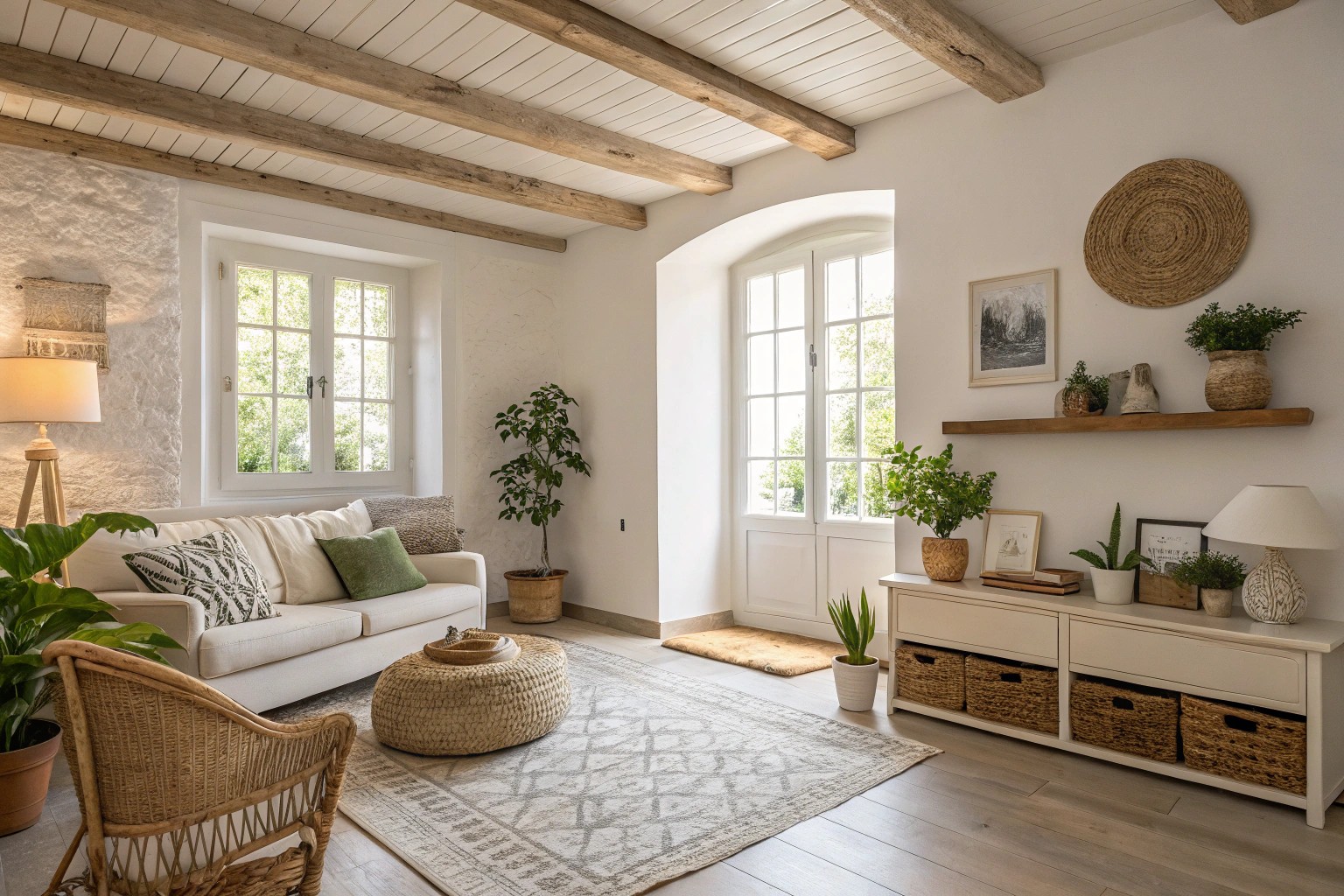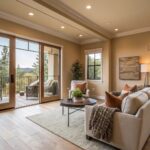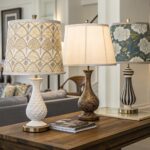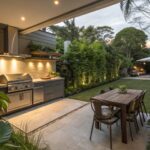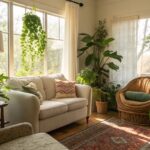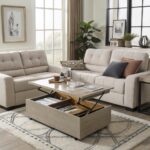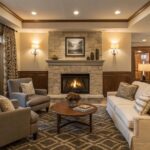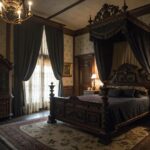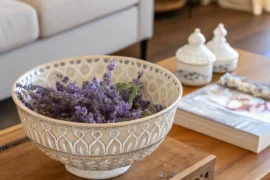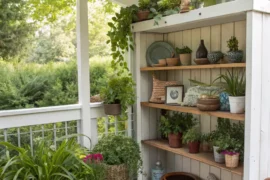Interior design doesn’t always require bold statement pieces to create visual interest and balance. After years of designing spaces for diverse clients, I’ve discovered that some of the most compelling interiors achieve focus through subtlety rather than drama. Whether you’re working with a minimalist aesthetic, a limited budget, or simply prefer understated elegance, this guide will explore how to create powerful focal points without relying on attention-demanding elements.
Understanding the Purpose of Focal Points
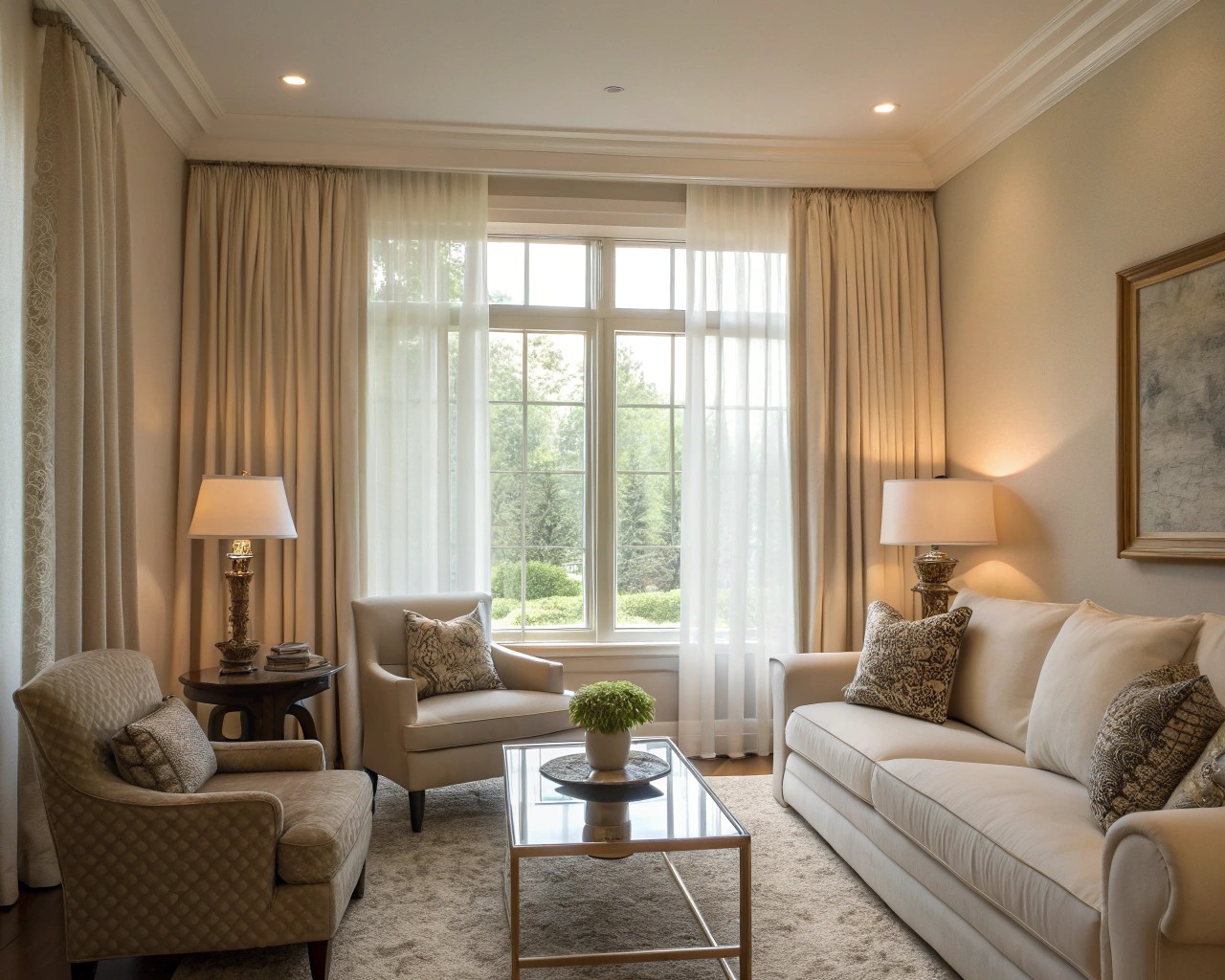
Focal points serve as visual anchors that give structure to your space. They draw the eye, create balance, and help establish the character of a room. Many homeowners believe they need something dramatic—an oversized chandelier, a vibrant accent wall, or an expensive piece of art—to achieve this effect, but this simply isn’t true.
A client once expressed concern during a consultation for her minimalist apartment, saying, “I don’t have anything special enough to be a focal point.” What she didn’t realize was that her floor-to-ceiling windows with city views were already the perfect focal point—they just needed proper framing and emphasis.
Focal points serve several crucial functions in design:
- Guide the viewer’s eye through a space
- Create a sense of balance and hierarchy
- Establish the mood and character of a room
- Control the narrative of how a space is experienced
- Enhance the functionality of different areas
Principles of Creating Subtle Focus
Visual Hierarchy Through Nuance
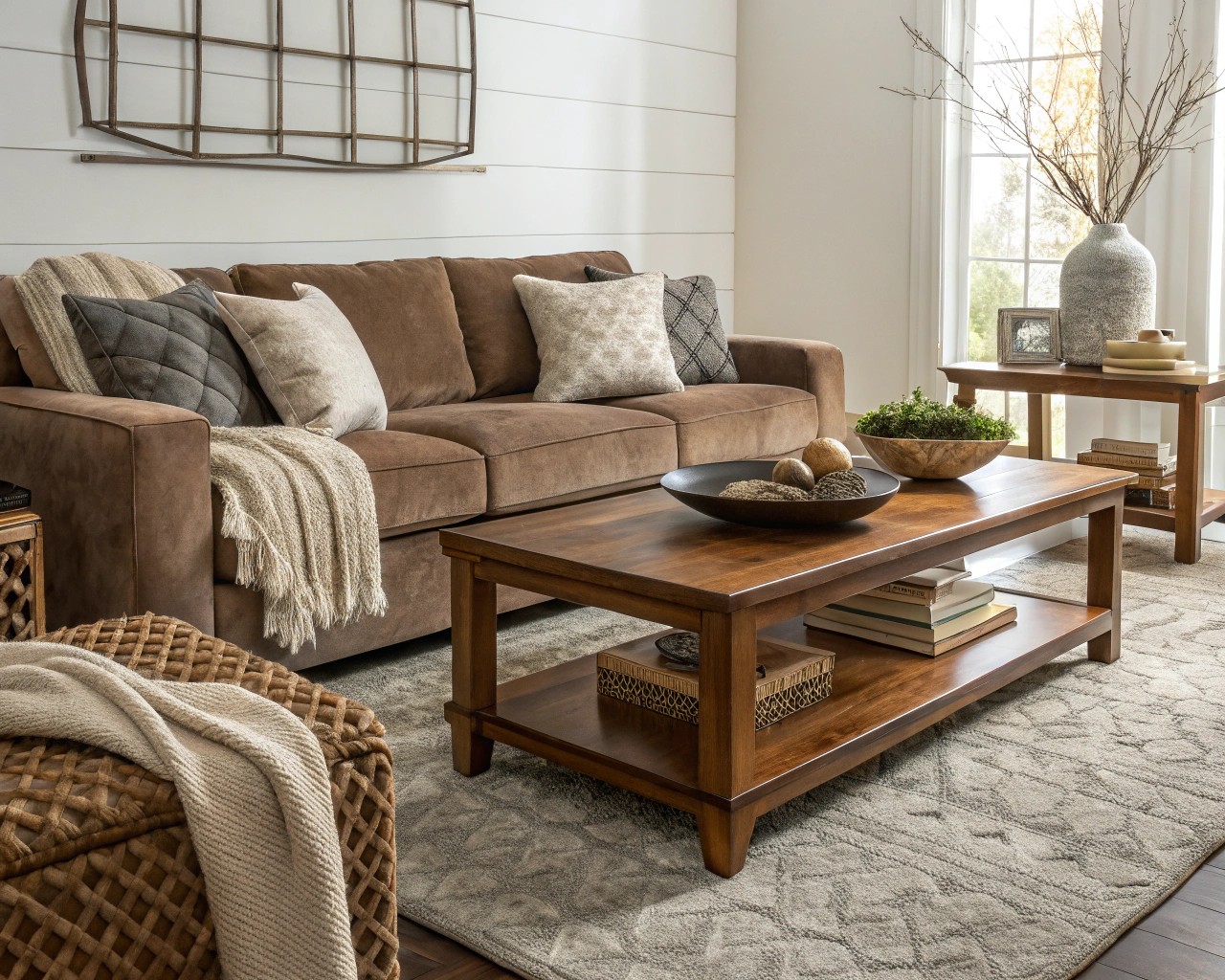
When working without statement pieces, we need to create subtle differences that naturally draw the eye. This approach relies on understanding visual hierarchy—the arrangement of elements that leads the viewer’s eye in a particular pattern.
You can establish visual hierarchy through:
- Slight variations in height or scale
- Subtle shifts in color or texture
- Strategic placement along natural sight lines
- Thoughtful lighting that highlights specific areas
The Power of Negative Space
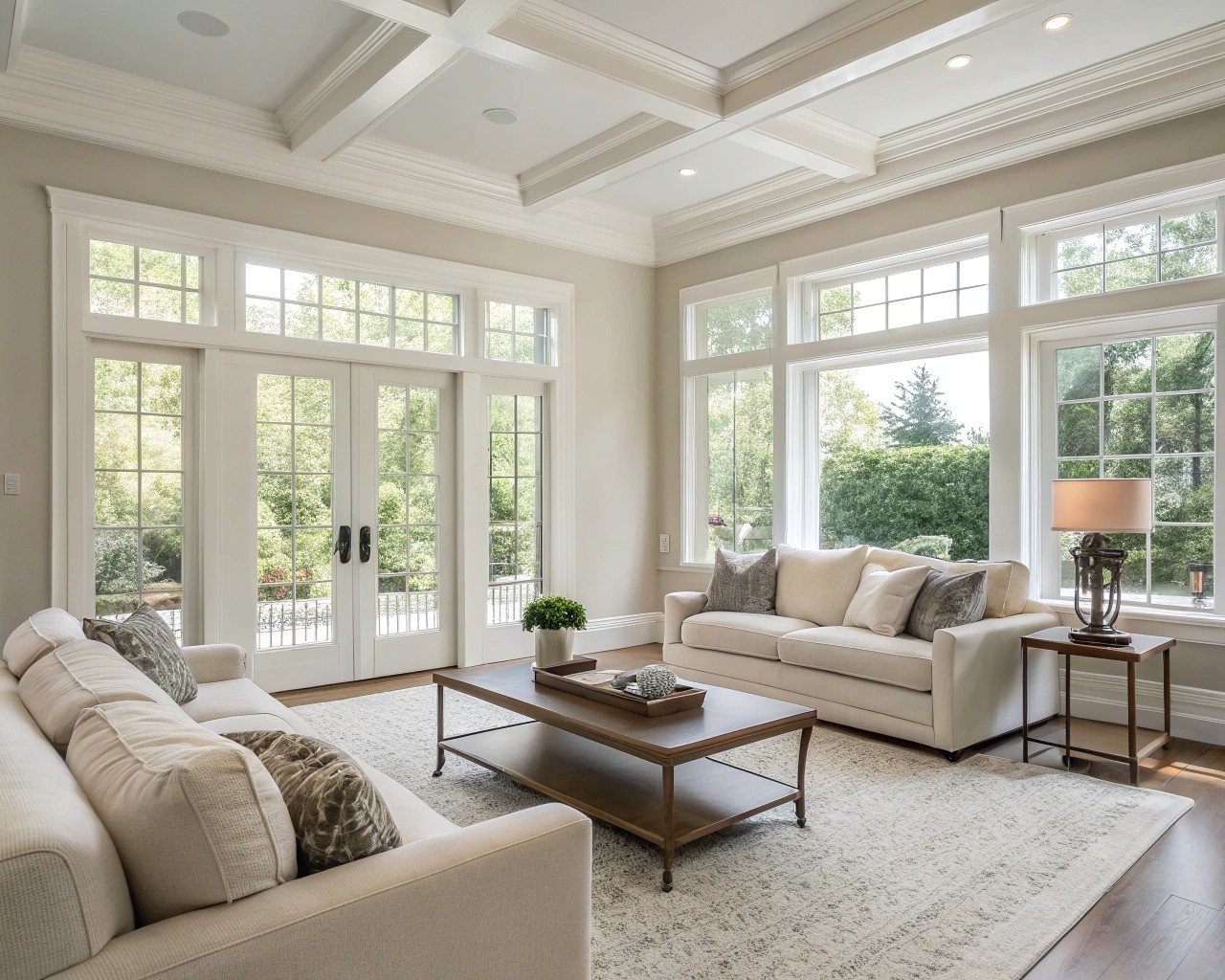
One principle I frequently employ is using negative space strategically. A well-placed empty area surrounded by thoughtfully arranged elements can create a powerful focal point through contrast. This approach works particularly well in minimalist designs where less truly becomes more.
For instance, in a living room designed for a tech executive, we established a focal point by leaving one wall entirely bare while carefully arranging shelving, seating, and lighting around it. The resulting emptiness became the most impactful element—a restful visual pause in an otherwise busy space.
Techniques for Creating Focal Points Without Statement Pieces
1. Strategic Use of Color and Texture
Color and texture can create powerful focal points without requiring dramatic showpieces. The key is using them strategically rather than overwhelmingly.
| Technique | Application | Effect |
|---|---|---|
| Tonal Shifts | Using slightly darker/lighter shades of the same color | Creates subtle depth and focus |
| Textural Contrast | Introducing elements like grasscloth wallpaper | Adds visual interest without bold color |
| Selective Color | Small touches of color in a neutral space | Draws the eye naturally |
| Reflective Surfaces | Materials that catch light differently | Creates dynamic focus that changes throughout the day |
In a recent project, we crafted a visually interesting all-white living room. By incorporating seven distinct shades and textures of white—ranging from glossy paint to matte finishes, and from nubby linen to smooth silk—we achieved a space with remarkable depth, featuring a natural focal point where the textural variations were most pronounced.
2. Lighting as a Focal Point Creator
Lighting is perhaps the most powerful tool for creating focal points without statement pieces. Strategic lighting can transform ordinary elements into focal points through emphasis.
Effective lighting approaches include:
- Layered lighting at different heights to create depth
- Wall washing to highlight texture or architecture
- Picture lights to emphasize artwork or shelving
- Under-cabinet or cove lighting to draw attention subtly
- Natural light management through thoughtful window treatments
For a gallery owner’s residence, we relied solely on lighting to generate focal points that evolved throughout the day. Recessed adjustable lights illuminated different walls and corners as the day progressed, fundamentally altering the room’s ambiance without introducing any single dramatic feature.
3. Architectural Elements and Framing
Existing architectural features often make the best focal points because they’re integrated into the structure of the space. These might include:
- Windows with interesting views
- Built-in shelving or niches
- Ceiling details like beams or coffered patterns
- Doorways, arches, or transitions between spaces
- Floor patterns or material changes
When these elements aren’t naturally present, we can create them through subtle architectural interventions. A slight change in ceiling height, a recessed area in a wall, or thoughtfully placed built-ins can create focus without demanding attention.
4. Repetition with Subtle Variation
This technique involves creating a pattern through repetition but introducing a subtle variation that naturally draws the eye. Examples include:
- A row of identical windows with one slightly larger
- A series of similar plants with one different variety
- Repetitive architectural elements with one highlighted differently
- A collection of objects in the same color with one contrast piece
In one project, I used this principle by lining a wall with identical ceramic vessels, except for the central one, which was slightly larger and featured a subtly different shade. This single variation established a focal point that anchored the entire room without being overtly attention-grabbing.
5. Strategic Placement and Positioning
Sometimes creating a focal point is simply about where you position existing elements. Consider these placement strategies:
- Aligning furniture to draw attention to a view or feature
- Using the rule of thirds to position key elements
- Creating sight lines that lead to a specific area
- Arranging seating to frame a particular space
- Floating furniture away from walls to create defined areas
Room-by-Room Guide to Creating Subtle Focal Points
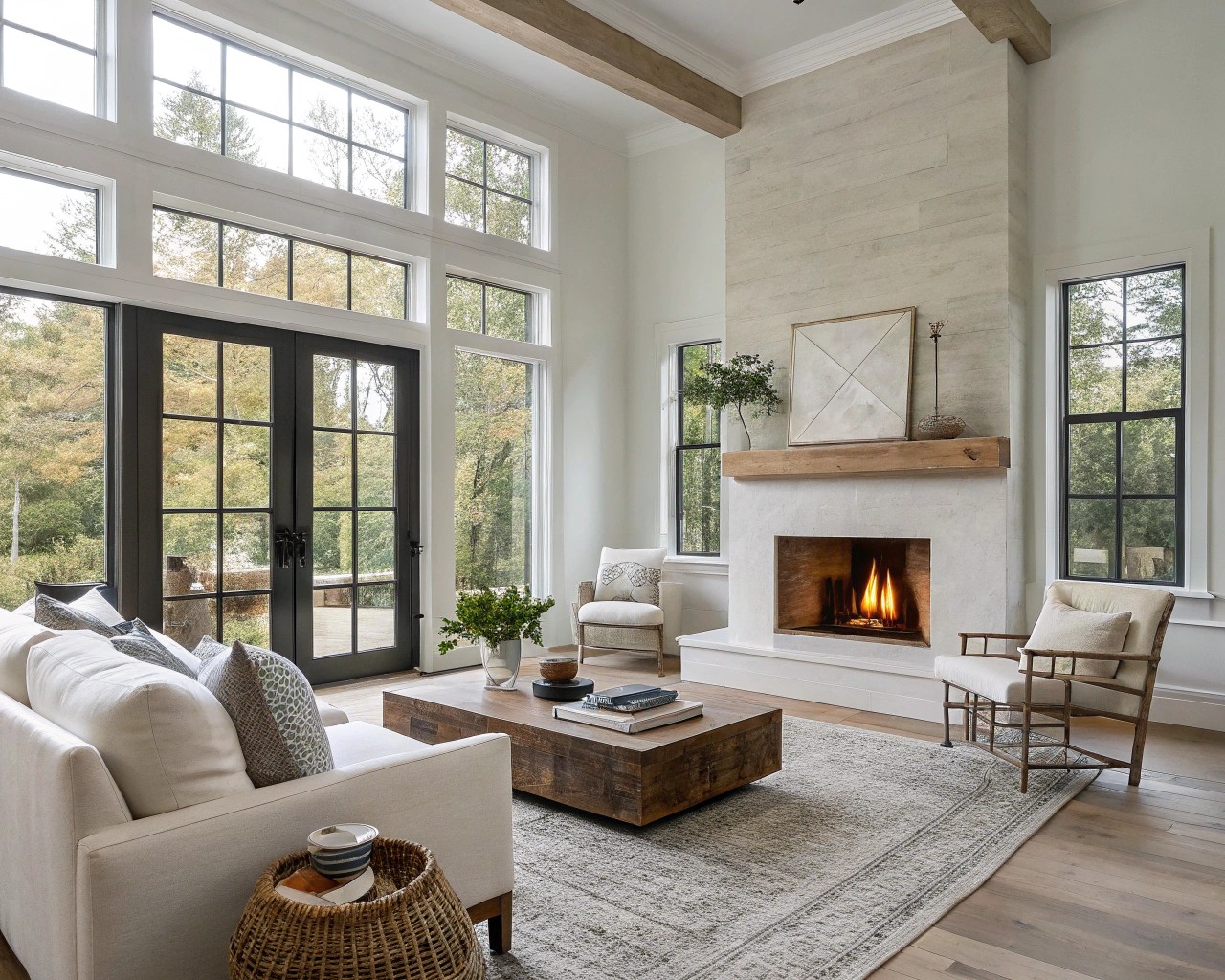
Living Rooms Without Fireplaces
Many modern homes lack traditional focal points like fireplaces. Here are alternatives that don’t require dramatic statements:
- Create a furniture arrangement that centers conversation
- Use a textural rug as a subtle central element
- Position seating to frame a view
- Use lighting to create a central glow
- Employ the painted arch trend for an architectural feel without construction
When assisting a client with a completely square loft living room lacking a natural focal point, we addressed the challenge by floating the furniture away from all walls. This created a centered conversation area defined by layered rugs, establishing a focal *zone* rather than a single point—an approach perfectly suited to their casual entertaining style.
Bedrooms
Bedrooms often rely on dramatic headboards as focal points, but these aren’t necessary for a well-designed space:
- Position the bed to capture a view
- Use layered bedding with subtle textural variation
- Create a small seating area that draws attention
- Install wall sconces or pendant lights on either side of the bed
- Use ceiling details like a subtle cove or painted area
I once transformed a client’s bedroom simply by repositioning the bed to face their garden view and adding layered window treatments that framed the scenery. The natural vista became the focal point, requiring no additional statement pieces.
Kitchens and Dining Spaces
Kitchens and dining areas can benefit from subtle focal points that enhance functionality:
- Use different cabinet heights or depths to create visual rhythm
- Highlight a cooking area with integrated lighting
- Change counter materials in a specific area
- Create an eating nook with subtle architectural framing
- Use flooring patterns to define zones
Outdoor Spaces
Gardens and outdoor areas offer unique opportunities for subtle focal points:
- Use paths that lead to specific areas
- Create height variation through strategic plantings
- Frame views through careful tree and shrub placement
- Incorporate water features for subtle movement and sound
- Use changes in hardscape materials to define areas
For a client with a small, featureless urban garden, we introduced a simple gravel path that curved slightly out of view. This elementary technique instantly sparked curiosity about the unseen area beyond, creating a focal journey instead of a static point and making the compact space feel significantly larger and more engaging.
Case Studies: Creating Impact Without Statement Pieces
Case Study 1: The Minimalist Apartment
A client with a small urban apartment desired a sophisticated space but faced constraints from a limited budget and lack of room for large statement pieces. Our approach involved:
- Using a monochromatic color scheme with subtle texture variations
- Installing picture rail molding to create architectural interest
- Employing directional lighting to highlight specific areas
- Creating a reading nook by simply repositioning an existing chair near the window
The result was a space that felt intentional and focused without any single dramatic element.
Case Study 2: The Open-Plan Family Home
This family needed distinct areas within a large open-plan space but didn’t want it to feel compartmentalized with dramatic dividers or statement furniture. We implemented the following:
- Used area rugs with subtle pattern differences to define zones
- Created ceiling details that subtly marked transitions between areas
- Positioned furniture to create natural divisions
- Used different lighting strategies for each functional area
The space remained open and flowing but had clear focal areas for different activities.
Common Challenges and Solutions
Addressing Concerns About a Lack of Drama
If your room feels flat without a dramatic element, you likely need more contrast—but contrast doesn’t have to be bold. Consider:
- Introducing more textural variation
- Using greater height differences in your accessories
- Adding subtle pattern in textiles
- Incorporating plants for organic shape and movement
- Using more dramatic lighting effects
Dealing with Visual Clutter or Competition
When multiple elements vie for focus, the solution is usually simplification:
- Remove extraneous decorative items
- Create more negative space around key elements
- Unify your color palette
- Simplify patterns and textures
- Use lighting to direct attention specifically
I recall visiting a client’s home where attempts to create multiple focal points—artwork, a colorful sofa, an ornate coffee table, and bold window treatments—resulted in visual chaos. By removing several items, simplifying the color scheme, and using lighting to emphasize just two key features, the space immediately felt more balanced and harmonious.
Injecting Energy into Subtle Designs
A space with subtle focal points can sometimes feel too quiet. Consider introducing:
- Small touches of more saturated color
- Elements with reflective quality that change with light
- Organic materials with natural variation
- Subtle movement through plants or flowing textiles
- Dynamic but simple artwork
Combining Techniques for Maximum Impact
The most successful subtle focal points often combine multiple techniques. Here are some effective combinations:
| Primary Technique | Supporting Technique | Example Application |
|---|---|---|
| Architectural Feature | Strategic Lighting | Highlighting a simple wall niche with adjustable spotlights |
| Color Variation | Placement | Positioning a subtly different colored chair at the head of a dining table |
| Texture | Repetition with Variation | A wall of textured plaster with one section in a slightly different finish |
| Negative Space | Framing | Creating an empty wall section surrounded by carefully arranged shelving |
| Lighting | Color | Using warm-toned lighting on one wall in a cool-toned room |

